
Three Victims: Their Lives, Their Deaths
By Jody Ewing
May 20, 2004
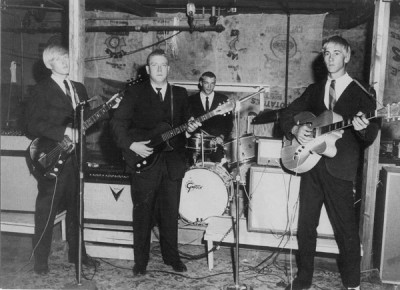 Courtesy photo Mike Tuttle
Courtesy photo Mike TuttleBilly Isom (left) was hell bent on playing bass guitar for the Saints and Sinners band, said friend Mike Tuttle (right), despite the fact he didn’t know how to play.
Ernest William Isom Jr., called “Ernie” by some and “Billy” by others, had a passion for music, football and drama.
Born Sept. 2, 1947, in Hammond, Ind., he attended grade school and high school in Cushing, Okla. In his junior year he and three other students formed the “Saints and Sinners” band.
“We all thought we were going to be the American Beatles,” said classmate and former band member Mike Tuttle, who now teaches history at Cushing. “When we first started our band we didn’t have a bass guitar player, and Ernie was just hell bent on being in our band. We’d already played a few dances and were scheduled to play at the Hotel Cushing for the eighth grade graduation dance. That day Ernie went to a pawn shop in Guthrie, [Okla.], bought him a bass guitar and amplifier and said, ‘I’m going to play for you guys.'”
Because Billy didn’t know how to play bass guitar, the band said ‘no’ but later relented, letting him sit onstage with them. They turned on his amp, then turned the sound all the way down.
“So we’re up there playing and I mean, the girls are coming up there and telling him, ‘Boy, you can really play,’ and he was getting all this attention,” Tuttle recalls. “But he just wanted to be part of the group.”
That group included Tom Sosbee, a friend Ernie made in grade school that he kept through graduation.
“He was daring and adventurous. He wasn’t a real big guy, but he wasn’t afraid of anything,” said Sosbee, who went on to work as an undercover agent for the Oklahoma State Bureau of Investigations and became a founding member of the Oklahoma Narcotics Bureau. “He wasn’t mean and he wasn’t a bully, but he could be feisty and he had a pretty quick temper.”
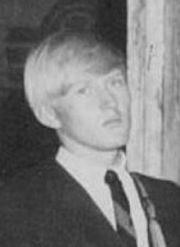
Billy Isom
Classmate Gary West remembers Billy standing up to their freshman football coach who wanted to paddle West, and as a tough, but vulnerable young man with an interest in acting.
“Billy had moments of great humor but he also seemed to possess a sad and lonely side,” said West, a communication arts teacher in Purdy, Mo.
Though Tuttle admits they were all “just a little bit ornery,” they were never in any major trouble with the law and were never involved with drugs.
“We didn’t even know what they were,” Sosbee said. “We thought marijuana was something beatniks in New York smoked.”
At the Oklahoma Military Academy in Claremore, Isom played junior college football and by all outward appearances seemed headed for greater things. “Ernie felt very patriotic,” said Tuttle.
Isom’s tour in Vietnam during the late 1960s – where he was wounded twice – probably helped lead to his demise, Tuttle said.
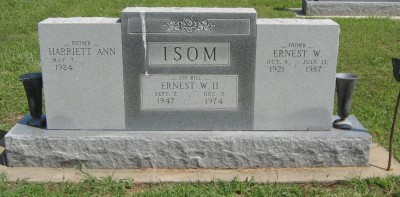 Courtesy photo Judy Mayfield, findagrave.com
Courtesy photo Judy Mayfield, findagrave.comBilly Isom is buried at Parker Cemetery in Arkansas City in Cowley County, Kansas.
“He was a medic in Vietnam, and in fact was pretty strung out when he came back,” said Tuttle. “His parents realized it and talked to his commanding officer. The commanding officer said basically, ‘we got thousands coming back and we don’t have the resources to take care of them.'”
As a history teacher, Tuttle said he uses his former best friend as an illustration of the casualties of Vietnam, “but his name is not on the wall.”
Harriet Isom has spent much of the past 30 years tormented by the death of her son, but she declined to talk about the murders.
“I know Harriet would like to see it resolved. She just doesn’t think it will be and she just doesn’t want to go through all the pain again,” said Billy’s cousin Carol Hearne, who talked with Harriet last Saturday.
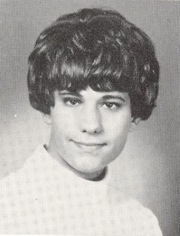
Freta Bostic
Artist, and soon to be mom
Born Aug. 19, 1950, in Greensboro, N.C., Freta Bostic was a graduate of Grimsley High School in Greensboro, and had worked at Guilford Mills there. Survivors at the time of her death included her mother, Marguerite Walker Bostic of Greensboro, two sisters, Deborah and Donna, both of Greensboro, and a brother, Douglas of Atlanta, Ga.
Beyond that, little was ever revealed about the young mother-to-be. The county coroner ruled that Bostic’s baby died as a result of her death. The baby girl’s age was listed at about four months. However, there were and continues to be conflicting reports about how far along she was in her pregnancy.
“She was full-term pregnant. I saw her, and I know a full-term pregnant woman when I see her,” said Sioux City Police Chief Joe Frisbie, an officer at the time who worked as a lead investigator on the case.
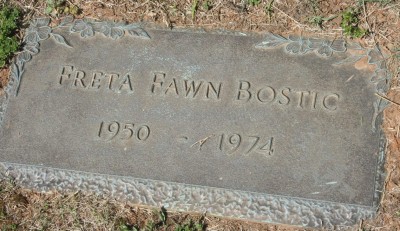 Courtesy photo Dewey Meeks, findagrave.com
Courtesy photo Dewey Meeks, findagrave.comFreta Bostic is buried at Westminster Gardens Cemetery in Greensboro, Guilford County, North Carolina.
Others confirmed she was in the final trimester, but no reason exists for the conflict.
Bostic also had a creative bent. “I know she was an artist,” Hearne said. “I do know that she did several paintings and things like that. Harriet still has some of them hanging in her house. She was very talented.”
Those paintings offer some of the few tangible traces of Bostic’s life outside of Greensboro. While she and Billy were together for some time, living in Arkansas City, Kan., among other places, they had not married.
‘My life depended on these people’
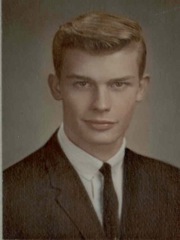
Jesse Hanni
Jesse James Hanni had his career goals mapped out by the time he entered fifth grade. Born Nov. 22, 1948, in Billings, Mont., he was reared on a ranch but had other dreams.
“He was going to be an engineer,” said his older brother Ray, who resides with his wife Nancy in the mountains of Red Lodge, Mont. “He was going to be rich.”
The younger Hanni excelled in college, but a break-up with a girlfriend affected his studies so much that he eventually dropped out. The war in Vietnam was there to pick up where he left off.
“He was in Fort Benning, Ga., I believe, training to become a non-commissioned officer and then expected to become an officer,” Ray said. During his tour in Vietnam in 1970 and ’71, Ray said Jesse took on the role of protector, and that his experience in actual combat changed the boy into a man who continued to risk his life in order to safeguard others. The elder Hanni said Jesse often spoke of entering enemy territory and killing Vietcong.
“They were supposed to go out five clicks in the enemy territory, and they would go about a mile or so,” Ray recalls. “Twice they encountered the Vietnamese and killed several Vietcong. He was telling about how they were sitting in an area and they could hear these guys coming, laughing, and they were carrying a bunch of supplies when they ambushed them. He had some pretty vivid memories.”
During their periods of rest and relaxation, Jesse bonded with his squad, often smoking pot. His squad would point out soldiers getting rowdy and fighting. “And we’re sitting here smoking these weeds and just being mellow,” Ray said, recounting what Jesse’s platoon members had said.
Yet Jesse told Ray he wasn’t “led” into drugs, but rather viewed the situation as a matter of trust. “‘I had to live with these people in my squad and I was in charge of them,'” Ray said Jesse told him. “‘My life depended on these people. I had to be able to trust them and they had to be able to trust me. This is why I did what I did.'”
After leaving Vietnam, Jesse returned to the Billings area where he promptly bought a house and set it up as a “safe house” where people without a home – including those on drugs – could stay. Jesse later left the area to follow work as a boilermaker in Colorado and Iowa, while his home in Montana became a growing mecca for illegal drug activity.
Ray discovered the significance of his brother’s home after the murders.
“Before news of his death was ever in the newspaper here, I went to go start seeing some of the people that knew Jesse here,” Ray said. “The scary thing about it is that they already knew.”
After speaking with Frisbie and Russell White, Jr., the other lead investigator on the case, Ray continued to investigate on his own – going from one place and name to the next – until an undercover Billings police officer recommended he back off. He was finding out too much about the drug dealers in the Billings area, Ray said the officer told him, which the officer felt had little to do with the Iowa murders.
“He finally told me, ‘If you don’t get away from this, you’re going to come home some day and your family’s going to be dead,'” said Ray, who still believes the “mafia-type hit” came from Colorado where the threesome were believed to be involved in the sale of drugs.
Ray and his father cleaned up the house and sold it shortly after the slayings.
Nearly 30 years later, Jesse’s unsolved murder still lingers in the twilight hours at a Red Lodge ranch in Montana.
“I was always the one who took him fishing and showed him how to fish and hunt,” said Ray, who has one other living brother and a sister. “He was almost more like a son than just a little brother. But Jesse was my little brother. He was a little guy I carried around…”
More About this Case: Horror of Triple Murder Lingers 30 Years Later
This article first appeared in the Weekender on May 20, 2004.
Police Chief Joe Frisbie retired from the Sioux City Police Department on March 31, 2009.
Information Needed
If you have any information about this unsolved triple homicide, please contact the Sioux City Police Department Investigative Services Bureau at 712-279-6390.
Copyright © 2024 Iowa Cold Cases, Inc. All rights reserved. This material may not be published, broadcast, rewritten or redistributed.

 Courtesy photo Mike Tuttle
Courtesy photo Mike Tuttle
 Courtesy photo Judy Mayfield, findagrave.com
Courtesy photo Judy Mayfield, findagrave.com
 Courtesy photo Dewey Meeks, findagrave.com
Courtesy photo Dewey Meeks, findagrave.com
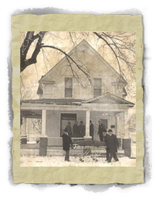

Recent Comments